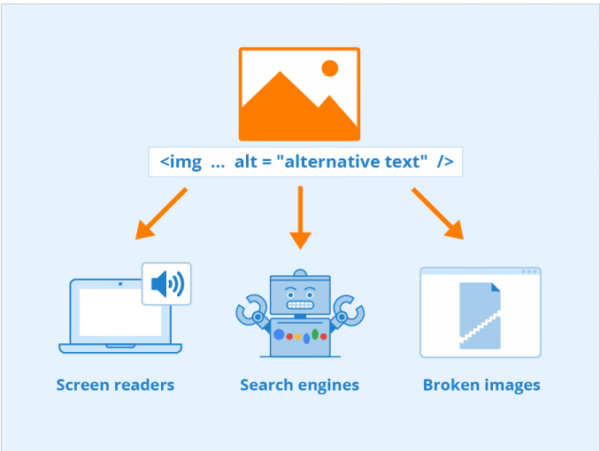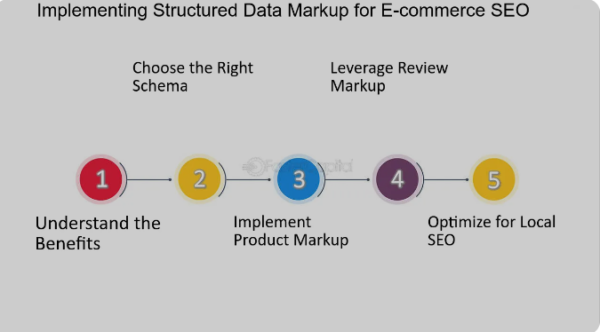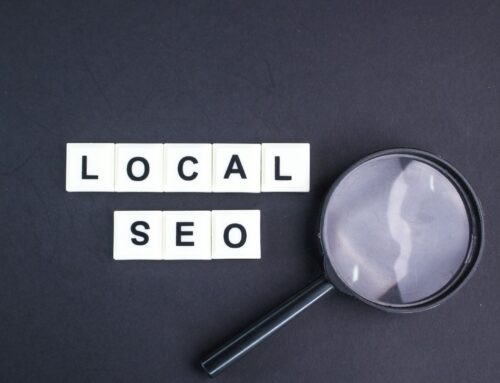Table of Contents
If you have an eCommerce website, optimizing your product pages for SEO is crucial to attract more traffic and generate more sales. Product page SEO involves optimizing your product pages to rank higher in search engine results pages (SERPs) and enhance the user experience. In this article, we’ll discuss the importance of product page SEO and how to optimize your product pages for better rankings.
Regarding SEO, your product pages are the most critical pages on your website. They are the pages where potential customers can learn more about your products and make a purchase. Therefore, optimizing your product pages for SEO is crucial to attract traffic and generate more sales. By optimizing your product pages, you can increase your chances of ranking higher in SERPs, which can lead to more organic traffic and sales.
In this article, you’ll learn how to optimize your product pages for SEO, including how to write compelling product descriptions, use keywords effectively, and optimize your images and videos. We’ll also discuss the importance of user experience and how to create a seamless buying experience for your customers. By the end of this article, you’ll better understand how to optimize your product pages for SEO and increase your chances of success in the highly competitive world of eCommerce.

Understanding SEO for Ecommerce
If you’re running an ecommerce store, you know that driving traffic to your website is crucial to your success. One of the most effective ways to do this is through search engine optimization (SEO). In this section, we’ll cover the role of product pages in SEO and critical SEO concepts for ecommerce.
The Role of Product Pages in SEO
Product pages are a critical component of ecommerce SEO. They are the pages on your website that showcase your products and provide all the necessary information for customers to purchase. Product pages can help drive organic traffic to your site when optimized correctly, increase your search engine rankings, and ultimately boost your sales.
To optimize your product pages for SEO, you must consider various factors, including keyword research, on-page optimization, and user experience. By doing so, you can ensure that your product pages are easily discoverable by search engines and provide a positive user experience for your customers.
Key SEO Concepts for Ecommerce
To effectively optimize your ecommerce store for search engines, it’s essential to understand some key SEO concepts. Here are a few to keep in mind:
- Keyword Research: Keyword research identifies the words and phrases people use to search for products like yours. Incorporating these keywords into your product pages can increase your chances of ranking higher in search engine results pages (SERPs).
- On-Page Optimization: On-page optimization refers to the various elements on your product pages that can be optimized for search engines, such as title tags, meta descriptions, and header tags. By optimizing these elements, you can help search engines understand what your page is about and improve your visibility in SERPs.
- User Experience (UX): User experience (UX) is essential in e-commerce SEO. By providing a positive UX on your product pages, you can encourage visitors to stay on your site longer and improve your chances of converting them into customers.
- Link Building: Link building involves getting other websites to link to your site. By building high-quality backlinks to your product pages, you can improve your site’s authority and increase your chances of ranking higher in SERPs.
By understanding these key SEO concepts and incorporating them into your ecommerce store, you can improve your chances of driving organic traffic to your site and ultimately boosting your sales.

Optimizing Product Page Elements
Several key elements must be considered when optimizing product pages for search engines. Crafting effective title tags and meta descriptions, utilizing high-quality images and alt text, and creating unique product descriptions can improve your product page’s visibility and attract more potential customers.
Crafting Effective Title Tags and Meta Descriptions
Your title tag and meta description are the first things potential customers will see when your product page appears in search engine results. Therefore, it’s important to craft them carefully to ensure they accurately reflect the content of your page and entice users to click through to your site.
To create a compelling title tag, use your product name and relevant keywords to give users a clear idea of what your page is about. Keep it concise and avoid using duplicate or irrelevant information.
Your meta description should also be concise and accurately reflect the content of your page. Use this space to highlight your product’s unique features and benefits and encourage users to click through your site.
Utilizing High-Quality Images and Alt Text
Product images are a crucial element of any product page, as they allow users to see what they’re buying and get a better sense of the product’s features and benefits. High-quality images and including descriptive alt text are essential to optimize your images for search engines.
Alt text is a brief description of your image that appears when the image cannot be displayed. Search engines also use this text to understand what your image is about, so it’s essential to include relevant keywords and descriptions.

Creating Unique Product Descriptions
Finally, your product description is another crucial element when optimizing your product page. Your description should be unique, informative, engaging, and reflect your product’s features and benefits.
To create a practical product description, focus on your product’s unique features and benefits and use descriptive language to paint a picture of what it’s like to use your product. Avoid using duplicate or generic descriptions, as these can harm your search engine rankings and make your product page less appealing to potential customers.
By optimizing these critical elements of your product page, you can improve your search engine rankings, attract more potential customers, and increase your sales and revenue.
Enhancing User Experience
When it comes to product page SEO, enhancing user experience (UX) is critical. Creating a positive user experience increases the likelihood of visitors staying on your site longer and converting into customers. Here are two ways to enhance user experience on your product pages:
Improving Site Structure and Navigation
A well-structured site with straightforward navigation is essential for a good user experience. One way to achieve this is by using breadcrumbs. Breadcrumbs are a type of secondary navigation that shows users where they are about the rest of the site. This helps users understand the site’s structure and makes navigating other pages easier.
Another way to improve site structure and navigation is to organize product pages into categories. This makes it easier for users to find what they’re looking for and helps search engines understand the site’s structure. Make sure your categories are clear and relevant to your products.
Incorporating User-Generated Content
User-generated content (UGC) is any content users create, such as reviews, comments, and social media posts. Incorporating UGC into your product pages can enhance user experience in several ways. First, it provides social proof that your products are worth buying. Second, it gives users more information about your products, which can help them make informed purchasing decisions.
To incorporate UGC into your product pages, consider adding a section for customer reviews. You can also include social media posts that mention your products. Just moderate the content to ensure it’s appropriate and relevant.
By improving site structure and navigation and incorporating user-generated content, you can enhance user experience on your product pages. This can lead to increased engagement, higher conversion rates, and, ultimately, more sales.

Leveraging Structured Data
Regarding product page SEO, leveraging structured data is a powerful tool that can help you improve your site’s search engine visibility and user engagement. Structured data is a standardized format for providing information about a page and its content. It can help search engines understand the context of your content and present it more usefully to users.
Implementing Schema for Rich Snippets
One way to leverage structured data for product page SEO is to implement schema markup. Schema is structured data that can provide additional information about your products, such as price, availability, and reviews. By implementing schema markup on your product pages, you can enable rich snippets in search results, which can help your products stand out and attract more clicks.
Rich snippets can include various information, such as product images, ratings, and pricing. By providing this information upfront, you can help users make more informed decisions about clicking through to your site. Additionally, by including rich snippets in your product pages, you can increase the likelihood that your products will be featured in Google’s product carousel, driving even more traffic to your site.

Understanding the Impact of Structured Data on SEO
In addition to enabling rich snippets, structured data can directly impact your site’s SEO. By providing more context about your products and their attributes, you can help search engines understand the relevance of your content to specific search queries. This can lead to higher rankings in search results and increased visibility for your products.
However, structured data is just one of many factors that can impact your site’s SEO. While it can be a powerful tool, it’s not a silver bullet. To maximize the impact of structured data on your product page SEO, you must combine it with other best practices, such as optimizing your site’s load times, creating high-quality content, and building high-quality backlinks.
Leveraging structured data is a powerful tool for improving your product page SEO. By implementing schema markup and enabling rich snippets, you can help your products stand out in search results and attract more clicks. Additionally, by providing more context about your products and their attributes, you can help search engines understand the relevance of your content to specific search queries, which can lead to higher rankings and increased visibility for your products.
Building Authority and Trust
When it comes to product page SEO, building authority and trust is crucial. Not only does it help improve your search engine rankings, but it also encourages customers to make a purchase. This section will explore two ways to build authority and trust on your product pages.
Encouraging Customer Reviews and Ratings

One of the most effective ways to build authority and trust is by encouraging customer reviews and ratings. According to a study by BrightLocal, 91% of consumers read online reviews before making a purchase. By providing a platform for customers to share their experiences, you can establish your brand as a trustworthy and reliable source.
To encourage customers to leave reviews, make it easy for them to do so. Include a clear call-to-action (CTA) on your product pages, such as “Leave a Review” or “Rate This Product.” You can also offer incentives, such as discounts or free shipping, to customers who leave a review.
Responding to customer reviews, both positive and negative, is essential. This shows that you value their feedback and are committed to providing excellent customer service. Be sure to address any concerns or issues raised in negative reviews and thank customers for their positive feedback.
Maintaining Accurate Stock Information

Another way to build authority and trust is by maintaining accurate stock information. Nothing is more frustrating for a customer than placing an order only to find out the item is out of stock. By keeping your stock information up-to-date, you can avoid disappointing customers and establish your brand as reliable.
Ensure your product pages indicate whether an item is in or out of stock. Consider using a table or list format to display this information and the expected delivery time. If an item is out of stock, give customers the option to receive an email notification when it becomes available again.
In conclusion, building authority and trust on your product pages is essential for SEO and customer satisfaction. Encouraging customer reviews and maintaining accurate stock information are two ways to establish your brand as trustworthy and reliable. Implementing these strategies can improve your search engine rankings and increase customer loyalty.







